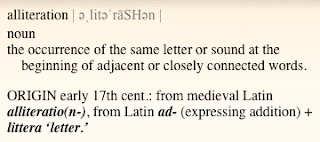
This blog posts on Mondays. Second Mondays of the month I devote to my writing workshop students and anyone else interested in creative writing. Welcome!
> For the archive of workshop posts click here.
The study of English Literature has its pleasures and virtues, and much to do with learning the craft of creative writing; nonetheless, these are not one and the same endeavor. You can earn a PhD in race, class, gender, fill-in-the-blank in the novel, yet still not have the wherewithal to actually write one. That said, a novelist who has never read anything by Shakespeare or, say, Jane Austen, and learned to appreciate why such works are so celebrated, is working at a calamitous disadvantage.
Analogy: an art historian specializing in baroque cabinets is not the cabinet-maker who crafts them. While the art historian focuses on fact and figures and on what the baroque cabinet represents in all its broader context; the latter actually makes one. The former might yammer on for a book or two about the Hanseatic League or the Counter Reformation or the rise of the urban bourgeoisie, and so and and so forth; the latter, she’ll worry about the specifics of the grain of the wood; the type of joint; the choice of tool; a carved rose or a daisy for the keyhole?
Further analogy: any furniture maker who would manufacture a baroque-style cabinet would undoubtedly benefit from some familiarity with the finer examples that have survived.
DEFINITIONS
As a writer, I don’t noodle much about literary definitions of the sort a highschool English teacher would lay on a multiple choice exam, e.g., whether thus-and-such is a simile or a personificaction, metaphor, or allusion. I just think of “imagery” as my palette of “metaphor stuff.” I, the artist, can ignore it. Or I can make tiny dabs of this; squirts of that; wild oceanic splashes! In other words, as I write a novel or a story or a poem or an essay, I use imagery– I apply “metaphor stuff”–when and as I judge it apt.
(Of course, if we aim to find readers, then comes revision and editing, and further revision… More about that big bramble of a subject anon.)
For using imagery, there is no formula. Some marvelous writers relish using loads of it, others, equally marvelous, apply it sparingly.
In general, it serves to slow down, focus and brighten an idea, a character, act, place, thing– whatever it is you want the reader to more sharply “see.”
Yeah, but what about clutter?
In my experience, most people who come to a writing workshop for the first time do not have the easily fixable problem of cluttering up their writing with “metaphor stuff”; rather, for lack of it their writing is dull. And when they do use metaphor stuff, alas, it’s more often than not cliché– that is, somebody else’s metaphor stuff, warmed over 279 times. (More about cliché here.)
How to come up with your own original “metaphor stuff”?
1. Practice. The more often you practice, the easier it gets. Like riding a bike, it doesn’t require some otherwordly talent; most people find it challenging at first and then, quickly, something they can “just do.” For a trove of exercises, have a look at my workshop page’s “Giant Golden Buddha” & 364 More Five Minute Writing Exercises.
2. Learn to notice it as you read. You already have an immense treasure of metaphor stuff at-hand, right there in the books you have already read and loved. Go pluck one off your bookshelf, open it at random and chances are, you’ll find metaphor stuff aplenty. As you reread– and as you read any new book– keep your eyes sharp for the way the author uses it. (See my post on Reading as a Writer.) How well do they use it? If you love the book, chances are, the author uses it very well indeed.
For those feeling a little creaky with the creativity mojo, I’ve posted previously about emulation or permutation exercises. Basically, you jot down another writer’s line or two– anything you especially admire– and then vary the nouns and/or verbs, adjectives and/or adverbs (or however you want to do it). In short, in these exercises the idea is not to plagarize another writer; rather, you emulate; by means of play, you create your own lines.
Yes, sometimes, like a big fat cheesy enchilada, too much metaphor stuff in a manuscript can be too too… uhhff, pass the Alkaseltzer.
But again, there is no formula. Switching back to the furniture analogy, I mean, “metaphor stuff,” not everyone wants all the swirls and twirls and dainty dimpled cherubs and roses and whatnotty-whatnots of baroque furniture. But some people think baroque is the Dickens’ chickens.
For your reference, and the satisfaction of all English teachers, herewith some definitions:
ALLUSION
An expression designed to call something to mind without mentioning it explicity; in indirect or passing reference.
“Where’s the Plantation?” John Wesley asked. “Gone With the Wind,” said the Grandmother. “Ha ha.”
—Flannery O’Connor “A Good Man is Hard to Find”
ANALOGY
A comparison between two things, typically on the basis of their structure and for the purpose of explanation or clarification; a correspondence or partial similarity.
A mind is like a parachute. It doesn’t work if it’s not open.
—Frank Zappa
Minds are like ovens— if you leave them open all the time, everything comes out half-baked.
—John Michael Greer
METAPHOR
A figure of speech in which a word or phrase is applied to an object or action to which it is not literally applicable; alternatvely, a thing representive or symbolic of something else, especially something abstract.
She had heard any number of women talk of pregnancy as a slow ordeal to be endured, but now from month to month she felt only a peaceful ripening.
—Richard Yates, “A Natural Girl”
PERSONIFICATION
The attribution of a personal nature or personal characteristics to something nonhuman, or the representation of an abstract quality in human form. (Throw animal forms in there, too, whydoncha.)
He watched the clouds: dark swift horses surging up the sky
—Malcolm Lowry, Under the Volcano
SIMILE
A figure of speech involving the comparison of one thing with another thing of a different kind, used to make a description more emphatic or vivid.
…a young woman in slacks, whose face was as broad and innocent as a cabbage
—Flannery O’Connor, “A Good Man is Hard to Find”
If you want to nerd-out on definitions, other bloggers can help you. Me, I am hereby definitioned-out.
SLOOOOOOOW
DOOOOOOOOOWN
When I teach this workshop I ask my students to each take a turn reading an example aloud. I would suggest that you do the same: Slow down, waaaaay down. Take a long, cool moment to read these examples aloud carefully, crisply, as if you were at the podium before a rapt audience.
We drove on, the morning
growing in the sky to our left.
—Rupert Isaacson, The Healing Land: The Bushmen and the Kalahari Desert
I wandered the village of rounded earthen houses, golden and white, decorated with stark geometric designs. They had a peculiar organic quality, as if they had bubbled up from the earth and dried there. Flattened dung cakes stuck on walls to dry looked like giant polka dots.
—Naomi Shihab Nye, “Camel Like Only Camel,” in Never in a Hurry: Essays on People and Places
Inquisitiveness flutters this way and that, like a bird in a glass house.
—Aldous Huxley, “The Traveller’s-Eye View”
Given the single fossil bone, one fancifully builds up the whole diplodocus.
—Aldous Huxley, “The Traveller’s-Eye View”
A Hollywood millionaire is a strong, silent man, clean-shaven, with a face, either like a hatchet or an uncooked muffin. These, on the contrary, had tremendous beards, talked a great deal, were over-dressed and wore white gloves. They looked like a little party of Bluebeards.
—Aldous Huxley, “The Traveller’s-Eye View”
Most of the above examples are from a handout I’ve used over the years in my “Techniques of Fiction” and “Literary Travel Writing” workshops at the San Miguel Writers Conference and the Writer’s Center. In case you’ve already seen those, herewith, from recent reading, some fresh examples:
But his smile stung me like a nettle. So I barked, “Have you been to the post?”
—Arthur Japin, The Two Hearts of Kwasi Boachi
My playing is no more like hers, than a lamp is like sunshine.
—Jane Austen, Emma
I have come out to lie on the rocks where I have the black edge of the north island in front of me, Galway Bay, too blue almost to look at, on my right, the Atlantic on my left, a perpendicular cliff under my ankles, and over me innumerable gulls that chase each other in a white cirrus of wings.
—J.M. Synge, The Aran Islands
Again, a curagh with two light people in it floats on the water like a nutshell
—J.M. Synge, The Aran Islands
He stuck with the tried and true—adding figures in his head. You could hear his lips whispering quick-quick-quick, like nuts rolling down a hill, and before you knew it he had the balance.
—Yenta Mash, “The Irony of Fate,” in On the Landing (translated from the Yiddish by Ellen Cassedy)
#
WALLACE STEGNER’S
BEYOND THE HUNDREDTH MERIDIAN

In the past couple of weeks, apropos of my book in-progress on Far West Texas (trying to get my mind around the history of the American West in general and Reclamation in particular) I’ve had the rich pleasure of reading Wallace Stegner’s Beyond the Hundredth Meridan: John Wesley Powell and the Second Opening of the West. Stegner is a master of many things, including “the metaphor stuff.”
Some examples:
It is easy to skirt the region, hard to cross it, for from Bear Lake at its northern border to the Vermillion Cliffs along the south, Utah has a spine like a Stegasuarus.
—Stegner, BTHM, p. 161
Powell saw the boat hang for a breath at the head of the rapid and then sweep into it.
—Stegner, BTHM, p. 63
Suppose he and his family endured the sun and glare on their treeless prairie, and were not demolished by the cyclones that swept across the plains like great scythes.
—Stegner, BTHM, p. 220
The inflexible fact of aridity lay like a fence along the 100th meridian.
—Stegner, BTHM, p. 229
Characteristically, he took on more than he could finish. He was a Thor, always getting caught in an attempt to drink the ocean dry or uproot the Midgard serpent.
—Stegner, BTHM, p. 279
His handling of the Commission was like a skilled muleskinner’s handling of a twenty-mule team.
—Stegner, BTHM, p. 289
Three hundred and sixty degrees of horizon ringed them, the sky fitted the earth like a bell jar.
—Stegner, BTHM, p. 297
And in these last examples, in addition to “metaphor stuff,” Stegner also uses alliteration, listing, and repetition:
The great men of Zion are on the map in Brigham City and Heber City and Knightsville, and beween and among these are scattered those dense but hollow names, smooth outside with use, packed with associations like internal crystals, that come from the Bible or the Book of Mormon—names that are like Lehi and Manti and Hebron, Nephi and Moroni and Moab.
—Stegner, BTHM, p. 192
But here before him was the opportunity of his life, the massive and complex problem of planning for the West whose parts meshed in an intricate system. And here was he with twenty years of experience and knowledge, every bit of which could be applied to the problem as an engine’s power is applied to the axles. The action of Congress, stumilated by Stewart and Teller, had shifted him into gear, and he was not now going to be content with making a humming noise or moving pistons meaninglessly up and down. He was going to turn wheels.
—Stegner, BTHM, p. 305
It was the West itself that beat him, the Big Bill Stewarts and Gideon Moodys, the land and cattle and water barons, the plain homesteaders, the locally patriotic, the ambitious, the venal, the acquisitive, the myth-bound West which insisted on running into the future like a streetcar on a gravel road.
—Stegner, BTHM, p. 338
He was not merely an explorer, an opener, and an observer, he was a prophet. And yet by the law of motion (and hence of history) which he himself accepted, his motion as a particle in the jar and collision of American life was bound to be spiral. His reforms have taken effect, his plans have been adopted, but partially, belatedly, sidelong, as a yielding resultant of two nearly equal stresses.
—Stegner, BTHM, p. 350
>> Find more workshop posts in the archive here; and many more resources at my workshop page on www.cmmayo.com here.

From The Writer’s Carousel: Literary Travel Writing
It Can Be Done! This Writer’s Distraction Free Smartphone
C.M. Mayo’s Workshop Page: Resources for Writers
Find out more about C.M. Mayo’s books, shorter works, podcasts, and more at www.cmmayo.com.










